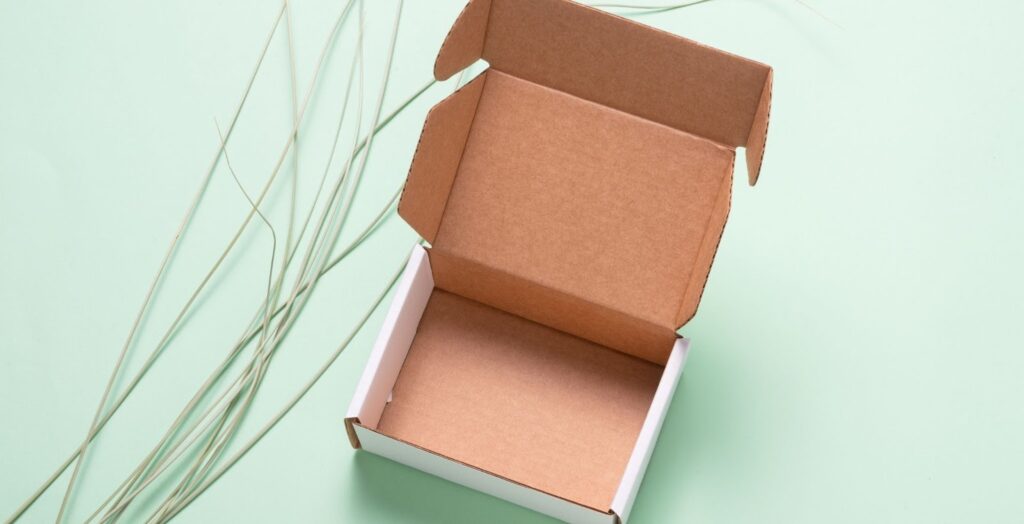Straight vs. Reverse Tuck: Which Box is Right?

When you’re designing custom packaging, the tuck box is often the best starting point. It’s cost-effective, versatile, and provides an excellent canvas for branding. But even within this seemingly simple category, there’s a fundamental decision that can impact everything from the manufacturing cost to the customer experience: Do you choose a Straight Tuck Box (STE) or a Reverse Tuck End (RTE)?
This isn’t just technical jargon for packaging engineers; it’s a practical choice that affects how your box is produced, how it looks on the shelf, and how easily your team can assemble it. Getting it right ensures efficiency and satisfaction, while getting it wrong can lead to unnecessary costs or a frustrating unboxing.
Let’s break down the differences, their pros and cons, and help you determine which tuck box design is the perfect fit for your product.
Understanding the Core Difference
Both Straight Tuck End (STE) and Reverse Tuck End (RTE) are folding carton styles where the top and bottom flaps tuck into the body of the box. The key difference lies in the direction those flaps fold:
1. Straight Tuck End (STE)
In an STE box, the top and bottom tuck flaps both extend from the same face of the carton, or in the same direction. When you fold the box, both flaps tuck in from the back panel towards the front.
2. Reverse Tuck End (RTE)
In an RTE box, the top and bottom tuck flaps extend from opposite faces of the carton. The top flap might extend from the back panel and tuck into the front, while the bottom flap extends from the front panel and tucks into the back. They “reverse” direction.
The Straight Tuck End (STE): The Elegant Choice
The Straight Tuck End is often considered the more visually appealing option, making it popular for high-end retail and gift items.
STE Advantages:
- Clean Front Panel: Because both flaps tuck in the same direction, the front face of the carton often looks cleaner, as the score line (the crease where the flap folds) and the dust flaps are less visible. This is ideal when the front panel features critical branding or a product window.
- Ideal for Product Windows: When you need a window to display the product, the STE design helps ensure that the raw edge of the flap doesn’t interfere with the window film or visibility.
- Easier Gluing: If you opt for an Auto-Lock Bottom (ALB) or need internal gluing, the STE’s symmetry can simplify the process.
STE Disadvantages:
- Tucking Interference: Since both flaps tuck from the same side, there can be a slight interference or “crowding” of the product inside, especially if the box is small or tightly packed.
- Higher Board Waste: Depending on the printer’s layout (the die-line), manufacturing multiple STE boxes on a single sheet of paperboard can sometimes result in slightly more wasted material compared to the RTE design.
The Reverse Tuck End (RTE): The Efficient Workhorse
The Reverse Tuck End is the reigning champion of efficiency, favored heavily for high-volume, automated packing and general retail goods.
RTE Advantages:
- Maximum Material Efficiency: This is the RTE’s superpower. The opposing tuck flaps allow the printer to nest the die-lines on the paperboard sheet more tightly. This arrangement significantly reduces scrap material, making the RTE design generally the most cost-effective to print.
- Reduced Crowding: Because the flaps tuck from opposite directions, the pressure applied to the product inside the box is more balanced, avoiding the crowding or crushing that can sometimes occur with an STE. This is great for sensitive or small items.
- Easier Automated Assembly: The RTE design often works more seamlessly with high-speed automated packing equipment due to its balanced structure and ease of folding.
RTE Disadvantages:
- Less Symmetrical: The opposing tuck lines mean the box has less visual symmetry. The score lines on the two main faces of the box won’t line up, which can sometimes be visible upon close inspection.
- Flap Alignment: When the box is closed, the two tuck lines are not on the same plane, which can sometimes look less “clean” than the STE design.
The Support of Custom Printed Boxez
To implement your choice—whether it’s the elegant STE or the efficient RTE—you need a packaging partner that offers both flexibility and quality. Custom Printed Boxez has established itself as an innovative online resource, specializing in customized printed packaging across a vast array of over 200 products. Their offerings are incredibly diverse, meeting the specific needs of various industries, from custom paper bags and detailed jewelry boxes to specialized options like custom cereal, candle, soap, and mailer boxes. The platform has earned a global reputation, with users frequently praising its user-friendly interface and commitment to cost-effectiveness, which successfully lowers the barrier for businesses of any size to access high-quality, professional, and personalized packaging. Essentially, Custom Printed Boxez is a valuable product for companies looking to execute their creative visions with reliable, accessible, and affordable packaging solutions.
Conclusion
Both the Straight Tuck End and the Reverse Tuck End are powerful, functional, and reliable packaging solutions. There is no universally “better” choice; only the choice that aligns best with your budget, your product’s fragility, and your brand’s visual priorities.
By understanding how the simple direction of the tuck flap impacts your bottom line and your customer’s experience, you can make an informed decision that saves you money on the manufacturing floor and earns you praise on the retail shelf. Choose wisely, and let your tuck box deliver your product perfectly every time.